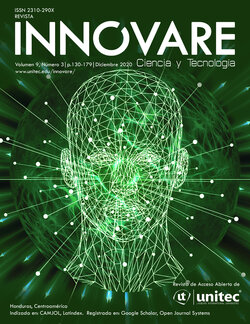Prediction of the compressive strength of concrete 1:2:3 from the initial setting time
DOI:
https://doi.org/10.5377/innovare.v9i3.10646Keywords:
Additive, Cement, Compression, Setting, StrengthAbstract
Introduction: The compressive strength of concrete is the most important design parameter in infrastructure projects in Honduras. The study aim was to determine the compressive strength of concrete (with and without accelerating additives) from the initial setting time by using a pocket penetrometer. Likewise, the relationship between the initial setting time and the water / cement ratio was studied. Methods: Hydraulic concrete mixes were made with a 1: 2: 3 ratio for different water / cement ratios (0.4, 0.5 and 0.6). Slump and compressive strength were determined at 28 days, with the extraction of mortar samples necessary to test the initial setting time. Results: The findings showed a linear negative relationship between the initial setting time and the water / cement ratio. The compressive strength could be explained by the initial setting time using the equation generated, 98% of the time. Conclusion: The use of accelerating additives does not contribute to increased strength. However, the use of accelerating additives made most of the mixes more fluid, regardless of the water / cement ratio. There is a utility correlation between the compressive strength of concrete and the initial setting time.
Downloads
827




